Related Research Articles

The United Kingdom has had a significant film industry for over a century. While film production reached an all-time high in 1936, the "golden age" of British cinema is usually thought to have occurred in the 1940s, during which the directors David Lean, Michael Powell, and Carol Reed produced their most critically acclaimed works. Many British actors have accrued critical success and worldwide recognition, such as Audrey Hepburn, Olivia de Havilland, Vivien Leigh, Glynis Johns, Maggie Smith, Laurence Olivier, Michael Caine, Sean Connery, Ian Mckellen, Joan Collins, Judi Dench, Julie Andrews, Daniel Day-Lewis, Gary Oldman, Emma Thompson, Anthony Hopkins and Kate Winslet. Some of the films with the largest ever box office returns have been made in the United Kingdom, including the third and sixth highest-grossing film franchises.
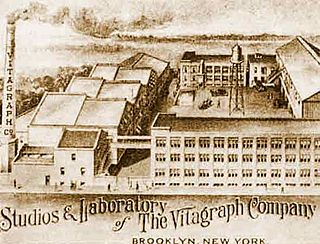
Vitagraph Studios, also known as the Vitagraph Company of America, was a United States motion picture studio. It was founded by J. Stuart Blackton and Albert E. Smith in 1897 in Brooklyn, New York, as the American Vitagraph Company. By 1907, it was the most prolific American film production company, producing many famous silent films. It was bought by Warner Bros. in 1925.
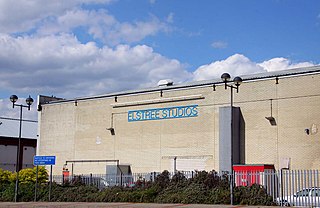
Elstree Studios is a generic term which can refer to several current and demolished British film studios and television studios based in or around the town of Borehamwood and village of Elstree in Hertfordshire, England. Production studios have been located in the area since 1914 when film production began there.

The film industry or motion picture industry comprises the technological and commercial institutions of filmmaking, i.e., film production companies, film studios, cinematography, animation, film production, screenwriting, pre-production, post-production, film festivals, distribution, and actors. Though the expense involved in making films almost immediately led film production to concentrate under the auspices of standing production companies, advances in affordable filmmaking equipment, as well as an expansion of opportunities to acquire investment capital from outside the film industry itself, have allowed independent film production to evolve.

Mancunian Films was a British film production company first organised in 1934. From 1947 it was based in Rusholme, a suburb of Manchester, and produced a number of comedy films, mostly aimed at audiences in the North of England.
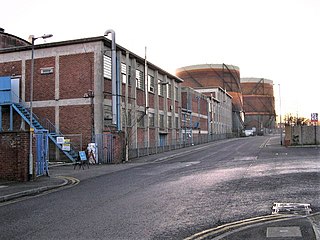
Gate Studios was one of the many studios known collectively as Elstree Studios in the town of Borehamwood, England. Opened in 1928, the studios were in use until the early 1950s. The studios had previously been known as Whitehall Studios, Consolidated Studios, J.H. Studios and M.P. Studios.
An auteur is an artist with a distinctive approach, usually a film director whose filmmaking control is so unbounded and personal that the director is likened to be the "author" of the film, thus manifesting the director's unique style or thematic focus. As an unnamed value, auteurism originated in French film criticism of the late 1940s, and derives from the critical approach of André Bazin and Alexandre Astruc, whereas American critic Andrew Sarris in 1962 called it auteur theory. Yet the concept first appeared in French in 1955 when director François Truffaut termed it policy of the authors, and interpreted the films of some directors, like Alfred Hitchcock, as a body revealing recurring themes and preoccupations.
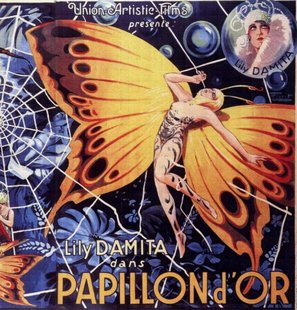
The Golden Butterfly is a 1926 Austrian-German silent drama film directed by Michael Curtiz and starring Hermann Leffler, Lili Damita and Nils Asther. It was based on the 1915 short story "The Making of Mac's" by British author P. G. Wodehouse. The film was released in the United Kingdom as The Golden Butterfly, in a form shortened to 5 reels, and had a limited release in the US under the title The Road to Happiness.
Keechaka Vadham is an Indian silent film produced, directed, filmed and edited by R. Nataraja Mudaliar. The first film to have been made in South India, it was shot in five weeks at Nataraja Mudaliar's production house, India Film Company. As the members of the cast were Tamils, Keechaka Vadham is considered to be the first Tamil film. No print of it is known to have survived, making it a lost film.
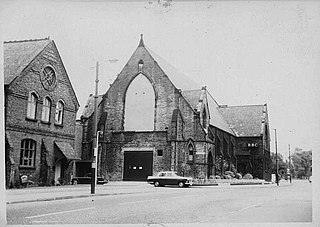
Dickenson Road Studios was a film and television studio in Rusholme, Manchester, in North-West England. It was originally set up in 1947 in a former Wesleyan Methodist Chapel by the film production company Mancunian Films and was acquired by BBC Television in 1954. The studio was used for early editions of the music chart show Top of the Pops from 1964.
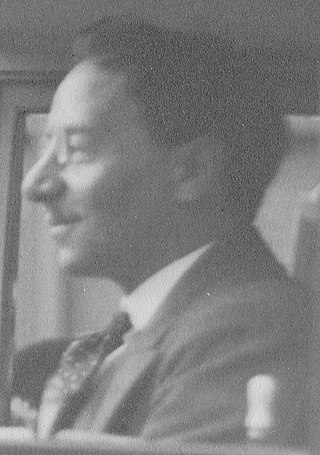
Ludwig Blattner was a German-born inventor, film producer, director and studio owner in the United Kingdom, and developer of one of the earliest magnetic sound recording devices.

Imperial Studios were the studios of the British and Dominions Film Corporation, a short-lived British film production company located at Imperial Place, Elstree Way, Borehamwood, Hertfordshire. The studios were active from 1929 to 1936, when they were destroyed by fire.

A Satanic film is a subgenre of horror film, and at times other film genres, that involves the Devil as a concept or a character. Common themes/characters in Satanic film include the Antichrist, demonic possession, exorcism, and witchcraft.

Elstree Studios on Shenley Road, Borehamwood, Hertfordshire is a British film and television production centre operated by Elstree Film Studios Limited. One of several facilities historically referred to as Elstree Studios, the Shenley Road studios originally opened in 1925.
References
- ↑ Abel, Richard (2005). Encyclopedia of Early Cinema. Taylor & Francis. p. 128. ISBN 978-0-415-23440-5.
- ↑ Low, Rachael (13 September 2013). The History of British Film (Volume 3): The History of the British Film 1914-1918. Routledge. p. 94. ISBN 978-1-136-20606-1.
- ↑ Cruttenden, M. J. "John Bromley, Station Master, and the Curious Events Surrounding His Demotion". Bluebell Railway Preservation Society. Retrieved 20 November 2016– via Bromley, Alan (2013). All About My Father: The Story of the Bromley and Coppard Families.
- ↑ "Timeline of British Film". Screenonline. BFI. Retrieved 18 October 2015.